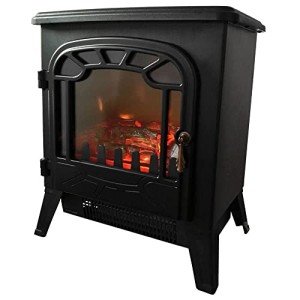The Complete Guide To Fireplace
The Charm and Functionality of Fireplaces: A Comprehensive Guide
Fireplaces have long been a main function in homes, representing heat, friendship, and comfort. They can be found in numerous styles, products, and fuel types, accommodating the choices and needs of varied homeowners. This short article looks into the complex world of fireplaces, exploring their history, types, setup factors to consider, and upkeep pointers, while supplying FAQs to address typical queries.
A Brief History of Fireplaces
Historically, fireplaces functioned as the cornerstone for cooking and heating homes. In ancient times, an open hearth was often placed in the center of a house. Over centuries, architectural improvements assisted in the development of more advanced styles, developing from simple stone structures to elaborate mantels that command modern home.
Key Historical Milestones:
- Ancient Times: Open fires in caverns and primitive huts for heat and cooking.
- Middle Ages: Large, frequently centralized chimney structures in great halls of castles.
- Renaissance: Decorative mantels and designs gain popularity, with the fireplace ending up being a symbol of wealth and status.
- Industrial Revolution: Advancements in products and producing permit a broader series of fireplace styles.
- Modern Era: Gas and electric fireplaces end up being prevalent, enabling increased benefit and security.
Types of Fireplaces
Today, numerous kinds of fireplaces are readily available, each with its special qualities. Below is a breakdown of the most common types:
Fireplace Type
Description
Pros
Cons
Wood-Burning
Traditional fireplaces sustained by wood.
Authentic experience, heat output.
Labor-intensive, needs proper venting/maintenance.
Gas
Fireplaces that use natural gas or gas.
Easy to use and preserve.
Less ambiance compared to wood.
Electric
Uses electrical power to produce heat and flames.
Safe, no venting needed.
Limited heat output, higher energy costs.
Bioethanol
Uses bioethanol fuel, producing tidy flames.
Environmentally friendly, portable.
Requires routine refueling.
Pellet
Utilizes compressed wood pellets as fuel.
Tidy burning, sustainable.
Needs power for operation.
Additional Considerations
When choosing a fireplace, it is vital to think about aspects such as:
- Fuel Availability: Consider what fuels are easily accessible in your location.
- Space and Aesthetics: The size of your living area and your design preferences should direct your option.
- Structure Regulations: Always speak with regional regulations to ensure compliance and security.
Setup Considerations
Installing a fireplace involves more than simply positioning a structure in your home. Buy Fireplace , professional input, and adherence to security codes are vital. Here are some critical actions:
- Planning: Consider the size and type of fireplace, where it will be placed, and its desired usage.
- Consultation: Hire a licensed specialist to assess your home and make sure appropriate setup.
- Permits: Obtain any essential structure permits from regional authorities.
- Materials: Select proper products for the fireplace and surrounding area. Ensure Buy Fireplace are fire-resistant and developed for your fuel type.
Upkeep Tips for Fireplaces
Regular upkeep guarantees your fireplace operates safely and efficiently. Here are important maintenance ideas classified by fireplace type:
Wood-Burning Fireplaces
- Chimney Cleaning: Have your chimney cleaned up every year to prevent creosote accumulation.
- Check for Damage: Check for cracks and damage to the firebox and chimney structure.
- Fire wood Storage: Store firewood away from the house to avoid bug infestations.
Gas Fireplaces
- Log Inspection: Regularly analyze ceramic logs for fractures and change if essential.
- Vent Cleaning: Ensure that vents are free from blockages.
- Pilot Light Check: Test pilot lights and ignition systems routinely.
Electric Fireplaces
- Cable Inspection: Frequently inspect electrical cords for tearing or wear.
- Clean Surfaces: Wipe down surface areas frequently to eliminate dust and debris.
- Smoke Detectors: Ensure smoke alarm in the vicinity are practical.
Bioethanol and Pellet Fireplaces
- Fuel Storage: Store fuels in a cool, dry place far from direct sunshine.
- Regular Refueling: Monitor fuel levels and refuel as required.
- Ventilation: Ensure proper ventilation when using these fireplaces.
FAQs About Fireplaces
Q1: Do I need an authorization to install a fireplace?
Yes, most towns need authorizations for fireplace setups to ensure security and compliance with regional building regulations.
Q2: How typically should I clean my chimney?
It is advised to have your chimney cleaned up a minimum of as soon as a year, specifically if you utilize your fireplace regularly.
Q3: Can I transform a wood-burning fireplace to gas?
Yes, lots of homeowners convert wood-burning fireplaces to gas for benefit, but seeking advice from an expert is a good idea to ensure a proper conversion.
Q4: Do electric fireplaces produce heat?
Yes, electric fireplaces can produce heat; nevertheless, their primary function is frequently for atmosphere, making them an appropriate choice for those who desire a fire appearance without extensive heating.
Q5: Are bioethanol fireplaces safe?
Bioethanol fireplaces are usually safe when utilized correctly; nevertheless, they need appropriate ventilation, and users need to follow all producer standards.
Fireplaces not only add visual interest homes however likewise provide practical heating services. With numerous types, styles, and maintenance requirements, property owners can make educated choices that best suit their needs and lifestyles. Whether deciding for the charm of a wood-burning fireplace or the convenience of a gas model, a fireplace can substantially enhance a living area's convenience and environment. As the hearth remains a centerpiece in homes, it continues to cultivate heat, discussion, and connections amongst household and pals.
